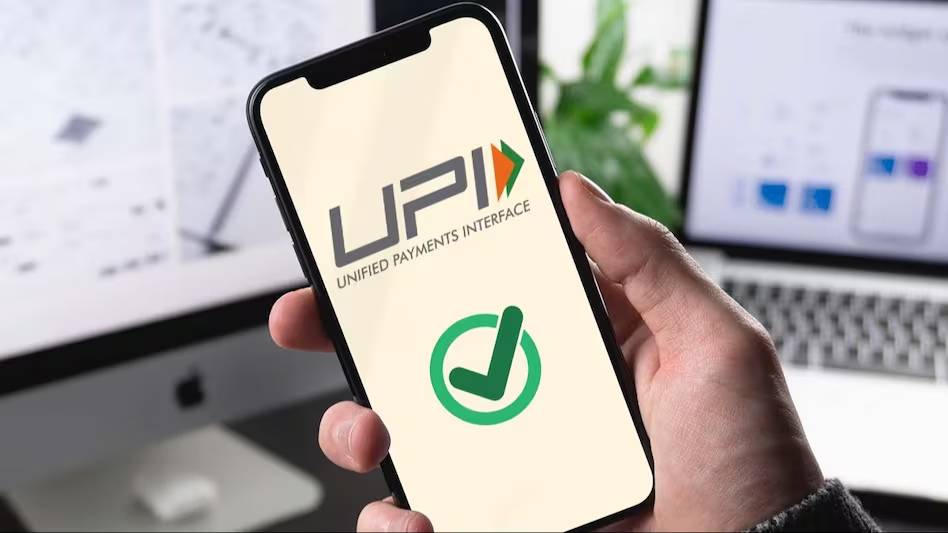UPI Payments: UPI is an instant payment system developed by the National Payments Corporation of India (NPCI). UPI stands for Unified Payment Interface. It is a revolutionary payment system by India to provide instant, secure, and cashless transactions between bank accounts using smartphones. It is one of the most pioneering and famous payment solutions in India. It is a digital payment solution through which a person can transfer funds from one account to another person’s account in an instant through his mobile. In the digital age, UPI makes the transfer of amounts more convenient and easy for Indians. It is a game changer in the field of digital transactions, even the world is shocked by this. UPI was launched on April 11, 2016, this alternative payment method connects multiple bank accounts to a single app, facilitating peer-to-peer and peer-to-merchant transactions. While all the other developed nations are still working on cards and cash method India is on its way to become the biggest cashless economy in the world all thanks to the UPI. Today in this article will understand what is UPI and all the other terminology and guidelines related to it.
What is UPI?
The full form of UPI is unified payment interface. It is a popular digital payment method which allows a person to transfer money from one bank to another in just a matter of seconds and that too without any charge. All that is required to have an UPI transaction is a bank account, mobile number and an UPI app. You can send money to your contacts easily just by having an application that supports you be a transaction such as PhonePe, Google pay and Paytm. Your UPI transactions and account are secured by a 4 or 6 digit pin that you set while making your UPI account
Key Takeaways:-
Here are three key takeaways from the information on the Unified Payments Interface (UPI):
1. Instant and Secure Transactions: UPI offers instant and secure fund transfers between bank accounts using smartphones. It utilizes multi-factor authentication, encryption, and secure channels to protect users’ financial data and transactions.
2. Widespread Adoption and Global Partnerships: UPI’s ease of use and cost-effectiveness have led to its widespread adoption across India, making it a preferred payment solution. It has also established partnerships with several countries to enable cross-border transactions, benefiting Indian residents and tourists.
3. Versatile Functionality: UPI goes beyond peer-to-peer (P2P) transfers; it offers additional features such as bill payments, mobile recharges, online shopping, and more. Users can easily make payments using mobile numbers, QR codes, Virtual Payment Addresses (VPA), and account numbers.
Features of UPI:-
Below are some features of UPI that makes it a popular payment option in India.
- The UPI transactions are very fast and the payment can be transferred in just seconds. Almost every bank in India allows transactions through their banking facilities.
- Payments through UPI are secured by various protection layers such as every time you make a transaction you will be asked about the pain that you set when you initially made the account. Moreover to make an UPI transaction the user must have its sim in the mobile all the time.
- Moreover the UPI applications also facilitate bill payments, mobile recharge and various other financial services for which you might have to visit several different offices or websites.
- All the UPI transactions are free of charge and available 24*7.
Reasons Behind the Success of UPI:-
UPI has gained popularity worldwide due to many reasons-
- Convenience: UPI offers a highly convenient payment experience from one smartphone to another smartphone. It just needs a few taps and your transfer is done. It reduces the need for physical currency around India.
- Instantaneous Transactions: One of the most important advantages of UI is it is a real-time transaction. Funds transfer from one account to another instantly. This instant settlement feature enhances the efficiency and speed of financial transactions.
- Security: UPI payment is secure because of robust security measures to protect users’ financial data and transactions. UPI uses multi-factor authentication, encryption, and secure channels to secure the data. They create the Virtual Payment Addresses (VPAs) instead of sharing sensitive bank account details.
- Cost-effectiveness: UPI is cost-effective for both the sender or receiver and users and merchants. There are no fees for transferring amounts like using traditional payment methods such as credit/debit cards or cash transactions. It is affordable for all, that is why, it has been used by most of all Indians.
- Innovation and Integration: UPI continues evolving itself by adding new features and innovations like e-commerce, mobile wallets, utility bill payment and many more.
- Government Support: UPI has strong government support from the Indian government as part of its initiatives to promote digital payments. The government also creating awareness for digital payment and the use of UPI instead of cash.
How Does UPI Payments Work?
UPI makes digital payment easy in India. It is highly famous in India and foreign countries also trying to merge with the National Payments Corporation of India (NPCI) for UPI integration. Virtual payment address or VPA is required to make an UPI transaction. VPA is a unique financial address using which you can send or receive money through online channels such as UPI. Once you register yourself on any of the UPI applications your VPA gets created automatically. Now to make UPI transaction open the app and select the QR code or the phone number or the UPI ID to which you want to send payment. Enter the payment amount and after that enter the transaction pin to successfully send the money. Let’s understand how UPI works-
- Registration: Users can register their UPI ID through any bank app or third-party UPI app like PhonePe, GPay, etc. At the time of registration, they link the bank account with the required details like the account number, and mobile number registered with the bank followed by the UPI PIN for later payment
- authentication.
- Virtual Payment Address (VPA) Creation: After registration, a unique Virtual Payment Address (VPA) is created and linked with the bank account. This Virtual Payment Address (VPA) acts as an alias for the user’s bank account and simplifies identification during transactions. It is also called UPI Id and its format is “username@bankname” (e.g., Rahul.raj@bank).
- Initiating Transaction: To make any transaction or payment, the sender opens their UPI app like Phonepe or Gpay and selects the option like send money or make payment. The option varies with the third-party app. Now, the sender enters the recipient’s VPA or contact number or just scans the QR code to the sent amount.
- Authentication and Authorization: After entering the receiver details and amount, the sender needs to authorise by entering the UPI PIN created at the time of registration. UPI PIN is a secure four or six-digit password. The UPI PIN serves as a second-factor authentication method. It verifies the user’s identity. After entering the correct UPI PIN, the transaction is authorised for processing.
- Transaction Processing: Upon authorization, the UPI system will process the transaction in real time. As a result, the sender account will be debited with the specified amount and the receiver account will be credited with the specified amount. It is an instant process which is done within seconds.
- Transaction Status and History: UPI also allows you to check the status and history of UPI transactions by a third-party app. UPI transaction status can be pending, successful, or failed transactions. UPI users can also check the history like transaction amount, date, time, and recipient’s VPA
- Additional Features and Services: Except for peer-to-peer (P2P) fund transfers, UPI also provides many additional features for the users. They can use it to recharge their phone, and DTH or pay utility bill payments, merchant payments, online shopping, ticket booking, and more. Nowadays, there are a lot of options available on the UPI app.
Participants in UPI
The following parties are involved in making a UPI transaction-
- Remitter bank
- Beneficiary bank
- NPCI
- Merchants
- Bank account holder
- Payer PSP
- Payee PSP
Registration Process in UPI enabled application
There are lots of UPI enabled applications that you can find on your Play Store or App store below we have listed the process through which you can register on them to start sending money via UPI
Steps to Create a UPI Account
Step 1: Download the UPI app from Play Store or App store such as Google Pay, Paytm or Phone pe.
Step 2: Just enter your mobile number. If you have a dual SIM phone, you may be prompted to select the SIM slot in which your mobile number is present. An SMS will be sent from your number to verify your mobile number.
Step 3: Once this is done, you will have to select your bank name from the list that will be presented to you. Please make sure that the mobile number registered with your bank is the same as the one you entered earlier. Your bank account details will now be fetched from the bank using your mobile number
Step 4: If you are linking your bank for the first time, you will be asked to set up a UPI PIN. You will need your debit card details for setting this up
Step 5: our bank account is now linked via UPI and you are ready to make your first payment
What is a UPI ID?
UPI ID is your unique name or identification among millions of UPI accounts. This UPI ID is used to identify both sender and receiver and facilitates seamless transactions between two parties. Below we have listed steps on how to find your UPI ID in your app.
How to Find Your UPI ID?
Step 1: Open the UPI app on your phone
Step 2: Tap on your profile picture located in the upper left corner of the main screen.
Step 3: Your UPI ID and QR code for receiving payments will be displayed under your profile picture.
Step 4: Copy and share your UPI ID with the sender to receive money easily
How to Transfer Money Using UPI?
There are four ways through which you can transfer money to anybody is account using an UPI app.
Mobile number – Using somebody’s mobile number you can also transfer money to their account which is connected to that said mobile number. However it is important that the receiver should also have and UPI account through that same number
QR code – QR code is also an easy and fast way to transfer money using an UPI app. QR code IS enclosed with your VPA, Account number, IFSC, or mobile number.
VPA (Virtual Payment Address) – Allows you to send or request money from a bank account using your UPI ID
Account Number – This lets you send money directly to the bank account
UPI Transaction Limit
The UPI transaction limit per day is generally Rs.1 lakh as per the National Payments Corporation of India (NPCI). However, there is a higher limit of Rs.5 lakh per day for payments to educational institutions and healthcare services. The maximum daily transfer limit may vary from bank to bank, ranging from Rs.25,000 to Rs.1 lakh. This range allows banks to set their own limits based on their policies and customer profiles. Users should check with their respective banks for the specific daily UPI transfer limit applicable to their accounts.
UPI Transactions Fees and Charges
The transactions through UPI are absolutely free, no app or Bank charges anything on these transactions.
List of Countries that accept UPI:-
As of now, the countries that accept Unified Payments Interface (UPI) for transactions or have established a partnership to integrate UPI in their financial systems include:
1. Singapore: The partnership between UPI and Singapore’s PayNow system allows for cross-border payments between India and Singapore.
2. United Arab Emirates: The National Payments Corporation of India (NPCI) and the Mashreq Bank of the UAE have partnered to facilitate UPI-based payments for Indian visitors.
3. Nepal: Nepal has introduced UPI to its payment infrastructure, making it one of the first countries outside India to adopt the system.
4. Bhutan: UPI services were launched in Bhutan, allowing the country’s banks to connect with the UPI network.
5. Mauritius: The State Bank of Mauritius (SBM) has partnered with NPCI International Payments Ltd. to introduce UPI services in Mauritius.
6. Oman: The partnership between NPCI and Oman is aimed at enabling UPI-based payments for the Indian diaspora and tourists in Oman.
7. Thailand: While not directly using UPI, India and Thailand have been working on integrating their digital payment systems, which may involve UPI.
8. France: As of now, France has expressed interest in collaborating with India on integrating UPI (Unified Payments Interface) with France’s financial system, enhancing cross-border payments and financial transactions.
These partnerships aim to enable cross-border transactions, facilitating easier and faster payments for Indian residents and tourists traveling to these countries. As UPI continues to gain popularity, it is possible that more countries will integrate UPI in their payment systems.
So this was all the information that you will need on the unified payment interface or UPI.





